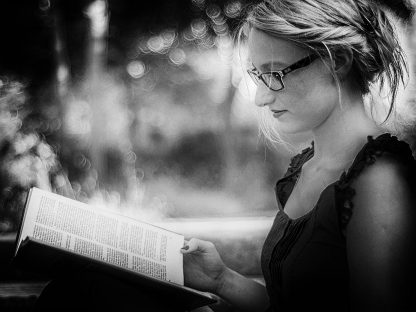
Image credit: Dogan Kokdemir
Paul Harrison said that typically 95% of his audiences were female.
This raises the question of whether women are more interested in crime than men.
Katherine Stansfield said that she did not know the gender split of her readership and that few authors had access to that kind of information.
However a 2014 study by Nielson Book Services suggests that 70% of crime or mystery readers are women.
There’s a great deal of speculation about why women read more true crime and crime fiction. The discrepancy may partly be caused by women reading more fiction than men overall, but this does not account for the gender imbalance at Paul Harrison’s talks.
Some suggest that, as women are more likely to fear violent crime, they have a greater desire to engage with these fears in a controllable manner. As Katherine says, crime fiction can often be reassuring.
A criminal profiler turned crime writer offers a glimpse into the minds of some of Britain and America’s most notorious serial killers

Image credit: Tony Webster
Former police officer Paul Harrison is telling the stories of the serial killers he has met, in a series of talks at Cardiff Glee Club.
Working as a criminal profiler, Paul has interviewed numerous violent criminals, attempting to understand their motives and behaviour to help law enforcement agencies with future cases.
He has over three decades of experience interacting with serial killers and was one of the first British police officers to work with the Quantico FBI Behavioural Science Unit.
Rather than revelling in gory details, Paul says his talks aim at stripping away some of the intrigue and myth that surrounds serial killers.
“I am 100% victim focused and don’t sensationalise the offenders at all,” Paul said. “It’s about understanding human behaviour and looking at what creates serial killers.”
He stresses that the talks are not academic or scientific lectures. Instead, they are intended both to inform and to entertain.
Paul is no stranger to entertaining with stories of crime, having written over a dozen true-crime books, many of them based on his professional experiences.
When asked why audiences find crime so engaging Paul said it is about understanding.
“I think we like to try to understand what makes people tick, why they do the awful things they often do,” he said. “Maybe to make us feel safe?”
Katherine Stansfield, a Cardiff based author who leads a crime fiction writing course, has similar views about the appeal of crime fiction.
She said that we are fascinated by people who cross the line from feeling murderous rage to acting on that anger.
“In crime fiction we can explore that idea safely,” she said.
Paul’s talks will take place at Cardiff Glee Club. There will be one on American serial killers on November 27 and another on British serial killers on December 5.

Image credit: Dogan Kokdemir
Paul Harrison said that typically 95% of his audiences were female.
This raises the question of whether women are more interested in crime than men.
Katherine Stansfield said that she did not know the gender split of her readership and that few authors had access to that kind of information.
However a 2014 study by Nielson Book Services suggests that 70% of crime or mystery readers are women.
There’s a great deal of speculation about why women read more true crime and crime fiction. The discrepancy may partly be caused by women reading more fiction than men overall, but this does not account for the gender imbalance at Paul Harrison’s talks.
Some suggest that, as women are more likely to fear violent crime, they have a greater desire to engage with these fears in a controllable manner. As Katherine says, crime fiction can often be reassuring.





